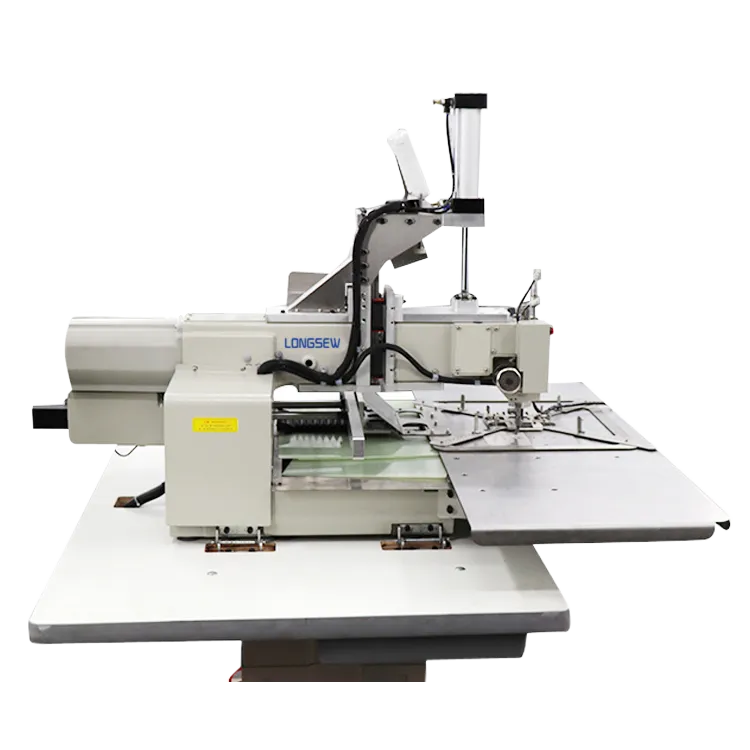Heavy Duty Sewing Machines for Crafting High-Quality Leather Bags and Accessories
The Essential Role of Industrial Sewing Machines in Leather Bag Production
In the world of fashion and accessories, leather bags have carved out a niche as timeless fashion statements that blend functionality with elegance. The production of these bags relies heavily on technology, and one of the most important tools in this process is the industrial sewing machine designed specifically for leather. These machines not only enhance efficiency but also ensure the quality and durability that consumers expect from high-end leather products.
The Importance of Industrial Sewing Machines
Industrial sewing machines are built for high-volume production and are distinctively different from domestic sewing machines. Their robust construction allows them to handle thick materials such as leather, which can be challenging for standard machines. Leather is a durable material, but it requires specific techniques and tools to sew it effectively without causing damage.
One of the primary advantages of using an industrial sewing machine for leather bags is speed. In the competitive fashion industry, time is money. Industrial machines can stitch faster and are equipped with features such as automatic thread trimming and programmable stitch patterns, significantly reducing the production time. This efficiency is crucial for manufacturers aiming to meet the demands of retailers and consumers.
Features Tailored for Leather
Sewing machines designed for leather typically come with specialized features that set them apart. For instance, they often have walking feet, which help to grip the leather layers as they pass through the machine, preventing slippage and ensuring even stitching. This feature is vital when working with multiple layers of leather, which can be common in bag construction.
Additionally, these machines utilize heavy-duty needles that can penetrate thick materials without bending or breaking. The use of appropriate needle sizes and types is essential to avoid damaging the leather, as incorrect needles can lead to unsightly holes or tearing. Furthermore, industrial machines have powerful motors that maintain consistent needle penetration, which is crucial for the quality of the final product.
industrial sewing machine for leather bags

Versatility in Design
The versatility of industrial sewing machines also plays a significant role in the leather bag industry. With different attachments and feet available, manufacturers can easily switch between sewing styles, whether it be stitching intricate patterns, adding decorative elements, or reinforcing seams for added durability. This versatility allows designers to experiment with various styles and innovations, adding creativity to the production process.
Moreover, the adaptability of these machines enables manufacturers to produce not just bags but also other leather products like wallets, belts, and jackets, making them an invaluable investment for any leather goods producer.
Quality and Durability
When consumers invest in leather bags, they expect a product that will withstand the test of time. Using industrial sewing machines with precision and quality stitching is essential for creating products that meet these expectations. The types of stitches produced by these machines, such as double-stitched or reinforced seams, enhance the durability of the bags, ensuring that they can bear the weight of contents and withstand daily wear and tear.
In addition, the consistency achieved through industrial machines means that each bag produced meets a high standard of quality. Consumers are likely to notice and appreciate the attention to detail in the stitching, which can set a brand apart in a crowded market.
Conclusion
Industrial sewing machinesplay a crucial role in the production of leather bags, combining efficiency with the quality necessary for durable and stylish products. Their ability to handle tough materials, coupled with features tailored for leatherwork, makes them essential for manufacturers aiming to create exceptional leather goods. As the fashion industry continues to evolve, these machines will remain indispensable tools, enabling designers and manufacturers to push the boundaries of creativity while satisfying the demands of an ever-discerning consumer base.
-
Industrial Cylinder Arm Sewing Machine: Revolutionizing Heavy-Duty SewingNewsJul.28,2025
-
Cylinder Arm Sewing Machine: Perfect for Special Sewing ApplicationsNewsJul.28,2025
-
Cylinder Bed Sewing Machine: Essential for Sewing Complex MaterialsNewsJul.28,2025
-
Heavy Duty Sewing Machine: The Essential Tool for Industrial ApplicationsNewsJul.28,2025
-
Computerized Pattern Sewing Machine: Revolutionizing Precision StitchingNewsJul.28,2025
-
Heavy Duty Industrial Sewing Machine: Power Meets PrecisionNewsJul.28,2025
-
Leather Sewing Machine: The Industrial Standard for Tough MaterialsNewsJul.18,2025





























